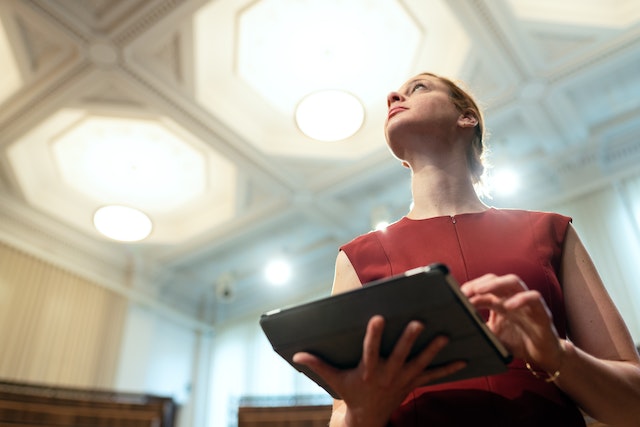LED Lighting Edinburgh
What are the advantages of LED lights over conventional lighting, a question that is frequently asked?
Here are the top ten advantages of LED lighting in Edinburgh.

LED Lighting has a Longer Life than other types of Lighting.
The primary advantage of LED lights stands out as long life. Outstanding operational life expectancy of up to 100.000 hours is expected for LED bulbs and diodes. There have been 11 years of nonstop operation, or 22 years of operation at 50%. It would take around 20 years if the LED fixture were left on for 8 hours each day before the LED bulb needed to be changed.
LEDs differ from conventional lighting in that they don’t actually burn out and stop functioning like a conventional light, and that the lighting diodes emit lower output levels over a much longer time period and become less brilliant.
LED Light bulbs Are Energy Efficient
The energy efficiency of today’s most effective lighting and illumination method is believed to be between 80% and 90% when compared to that of conventional light bulbs and traditional lighting. In other words, around 80% of the electrical energy is converted to light, while 20% is lost and transformed into other energy forms, such heat.
The energy efficiency of conventional incandescent light bulbs is only 20%, and 80% of the electricity used in them is wasted as heat. Think about the following case:
If you use traditional lighting and your power bill is, say, £100, £80 of that money has gone toward heating the room rather than illuminating it! Electricity bills would be roughly £20 and you would have saved about £80 if you used LED lighting with an efficiency of 80%.
Long operational lives operate as a multiplicator and aid in achieving even greater energy efficiency, particularly on a big scale and when considering urban infrastructure projects like cities, trains, and airports.
Imagine, for instance, a terminal using only energy-efficient LED lighting and achieving a 30% reduction in power usage compared to a terminal using conventional lighting technology.
Think about how much time and energy it would take to buy, stock, and replace all the conventional light bulbs in an airport, and you’ll see how much energy you can save even when it comes to maintenance and replacement thanks to the long operational lives of LED lighting.
LED Lighting is Environmentally Friendly
Toxic substances are not present in LED lights. The majority of standard fluorescent light bulbs include a number of hazardous substances including mercury that are bad for the environment.
You may cut your carbon footprint by up to a third by using LED lights because they are 100% recyclable and contain no hazardous components. The above-mentioned lengthy operating life means that one LED light bulb can also eliminate the need for 25 incandescent light bulbs’ worth of materials and manufacturing. An important step toward a brighter future!
LED Bulbs are of Sturdy Quality
LEDs are made of solid parts that are quite tough and can endure even the harshest conditions, making them incredibly durable.
Given that LED lights are immune to stress, vibration, and external impacts, they make excellent outdoor lighting systems for harsh environments and exposure to weather, wind, rain, or even external vandalism, traffic-related public exposure, and construction or manufacturing sites.
LED Bulbs have No UV Emissions
Little infrared light and almost no UV emissions are produced by LED lighting.
As a result, LED lighting is ideal for illuminating UV-sensitive items and materials, such as those found in museums, art galleries, archaeological sites, and other settings. This is because LED lighting emits very little heat radiation.
LED Lights are Modularity in Design
To provide incredibly effective illumination, LEDs can be arranged in any configuration. A dynamic control of light, colour, and distribution is possible by dimming individual LEDs. Excellent lighting effects can be produced by well-designed LED illumination systems, which are not only pleasing to the eye but also to the mood and mind:
Within the next few years, we could expect to see a significant increase in the use of LED mood illumination in places like classrooms, airlines, and a great deal more.
LED Bulbs Are Able to Function in Extreme Cold or Heat
LEDs are perfect for use in cold and chilly outdoor temperatures. Low temperatures can impact the functioning of fluorescent lights and provide challenges, but LED lighting works well in cold environments as well, such as outdoor winter settings, freezer rooms, etc.
LED Lighting has better Light Dispersal Properties
The application effectiveness of LED is higher than that of conventional lighting since it is made to focus and may be directed to a specific area without the need for an external reflector. Light may be delivered more effectively to the desired spot with well-designed LED illumination systems.
LED Lighting is capable of Continual Lighting & Switching
For infrastructure projects like traffic and signal lights, for example, LED lights shine up instantly and when turned on, which has significant advantages.
LED lights can also be turned on and off repeatedly without impacting their lifespan or ability to emit light. Traditional lighting, in contrast, may take a few seconds to attain maximum brightness, and frequent on/off switching significantly reduces operational life expectancy.
LED Lighting uses a Lower Voltage
LED lighting just needs a low-voltage power source. By connecting an external solar-energy source, this makes it simple to use LED lighting in outdoor situations. This is a significant advantage when using LED technology in isolated or rural places.

